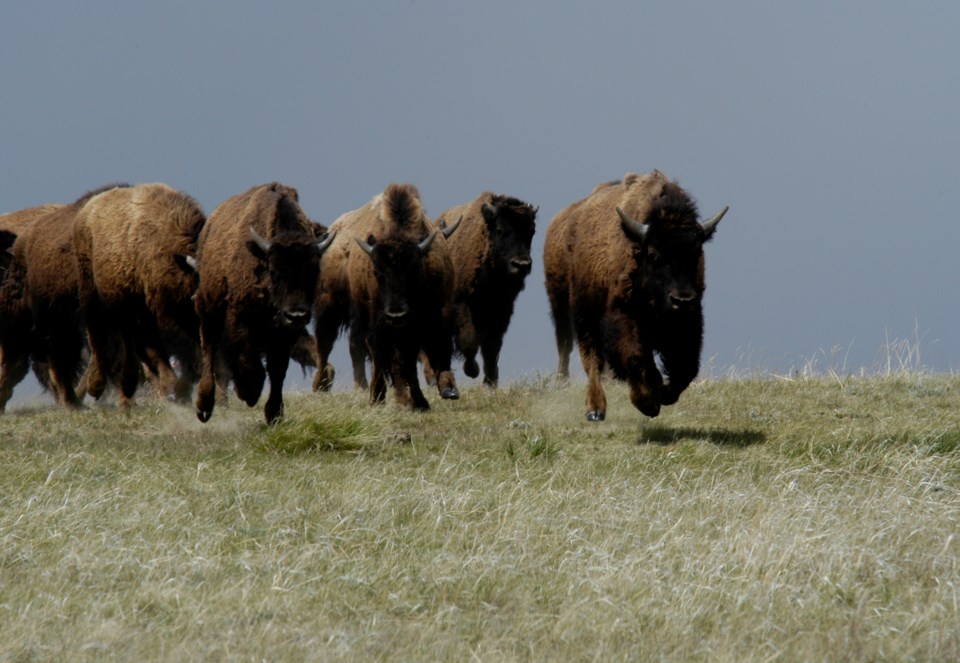As part of the Nature Conservancy of Canada’s (NCC) management Plan for the Old Man on His Back Prairie and Heritage Conservation Area, five new bison bulls have been added to the existing herd.
And now NCC is looking for the public’s help to name these bulls!
Should they be named after Outlaw Country Singers, New Kids on the Block, Action Movie Stars or Looney Tunes Characters?
People can vote for their favourite on NCC’s Twitter poll. @NCC_CNC is the account.
The bulls were added to help maintain the health of the herd. Using science-based conservation and on-going research, NCC will deepen its understanding of their evolving behaviours and herd dynamics, and help support bison restoration at the Old Man on His Back Prairie and Heritage Conservation Area for the long-term.
The five bulls were born and raised in Canada. They come from three separate producers, two of which are in Saskatchewan, and the other in central Alberta. All five were born in 2017 and around 2.5 years of age, so they will continue to grow for five or so years until they are eight years old.
The addition of these bulls is part of NCC’s efforts to diversify the genetics of our herd to ensure that we are producing calves that are healthy.
They will remain separated from the rest of the herd for approximately 30 days to ensure that they are healthy and to give them time to adjust to their new surroundings.
The plains bison were extinct here
The Old Man on His Back Prairie and Heritage Conservation Area (OMB),located in southwestern Saskatchewan in the rural municipality of Frontier, 15 kilometres west of Claydon and 210 kilometres southwest of Swift Current, is where plains bison had once roamed in the thousands but had become extinct in the early 1900s.
In the winter of 2003, a group of 50 two-year old plains bison were transported in trailers from Elk Island National Park in central Alberta and driven nearly 700 kilometres to this site.
These genetically-pure plains bison were introduced at Old Man on His Back - reintroducing the native grazer to the area with the goal of maintaining and enhancing biodiversity.
The ranch, just west of Frontier, Sask., was donated to the Nature Conservancy of Canada (NCC) by Peter and Sharon Butala in 1996. The Old Man on His Back ranch is not only a home for the recovery of plains bison – it is a beacon of hope for conserving the area's native grasslands. It had long been the late landowner Peter Butala’s dream to see plains bison return to the 13,000-acre (5,300 hectare) mixed grass prairie site.
Now close to 17 years later, the herd has become an established fixture on the prairie.
Old Man on His Back also provides habitat for various species of plants and animals. Imperiled species such as ferruginous hawk and swift fox. Pronghorn, mule and white-tailed deer are commonly sighted.
As part of the semi-arid mixed grass prairie area, which originally spanned two provinces and five states, most of the mixed grass prairie disappeared rapidly with settlement and conversation to croplands. Dry prairie landscape is under great threat of cultivation in southwestern Saskatchewan.



